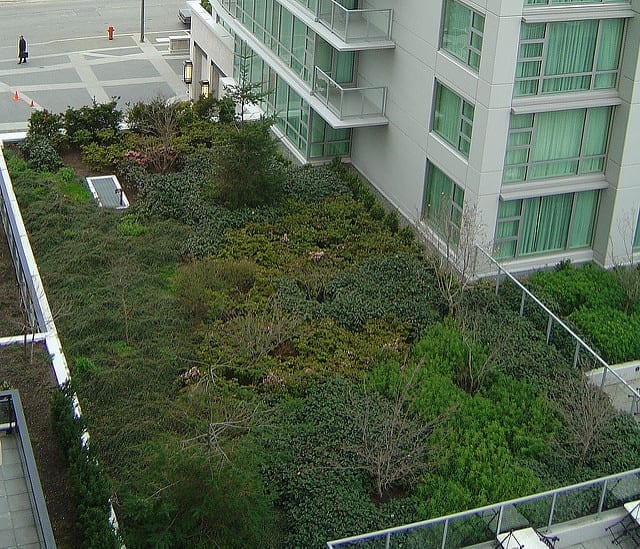While stormwater runoff was for many years seen as a nuisance and inconvenience to be removed as quickly as possible and dealt with elsewhere, the quest for more sustainable building techniques means that it is now seen as what it is – a valuable resource that can be put to good use onsite if managed correctly.
By allowing water to move in more natural ways and infiltrate the ground, rather than diverting it offsite, multiple benefits can be achieved.
Some of these include improving aesthetics and removing pollutants through the growth of vegetation, making cities more resilient and better able to cope with large rain or flooding events, providing habitats for insects and wildlife, and reducing the burden on treatment facilities downstream.
Here we take a closer look at what LID (Low Impact Development) is all about, how it can be achieved, and examine some examples from around the world.
What is Low Impact Development (LID)?
Although it goes by different names, such as Sustainable Drainage Systems (or SuDS) in the United Kingdom, Water-Sensitive Urban Design (WSUD) in Australia, or simply ‘onsite storm water management’ or ‘natural drainage systems’, low impact development is rapidly becoming the required design approach in many areas of the United States and across the globe.
LID focuses on using nature as the model, managing and utilizing rainfall at the source rather than simply diverting it elsewhere. It focuses on the pretreatment, filtration, infiltration, storage, and reuse of rainfall as a resource.
Designing for LID is generally broken up into five core areas or principles:
- Interfere as little as possible with existing natural areas
- Minimize impact on the site’s hydrology
- Retain water on site
- Use integrated management practices (IMPs) across the site
- Implement proper maintenance, pollution prevention, and public education programs where appropriate
Examples and technologies:
Rain gardens, green roofs, bioswales, disconnected downspouts, permeable paving, soil amendment and the use of rain barrels or cisterns are all commonly used techniques in low impact development. Here we examine a few in more detail.
Green Roofs and Rainwater Harvesting
Impermeable roofs are a massive source of stormwater runoff, and green or vegetated roofs are an increasingly popular way of managing rainwater where it falls rather than sending it all, often literally, down the drain.
Aside from their aesthetic appeal, they also provide better insulation for the building below, reducing energy consumption.

Where a green roof is not appropriate (such as retrofitting an existing structure or on a building which cannot support their weight) capturing and harvesting that runoff for later use in gardens or as gray water is relatively simple.
For every 1,000 square feet of rooftop, it is possible to collect over 600 gallons of water for every inch of rain that falls.
Permeable Paving
Permeable paving incorporates the use of materials which are porous, such as pervious concrete or porous asphalt, or impervious materials with spaces in between such as paving stones, which allow water to reach the ground below.
Cycle lanes, pedestrian footpaths and sidewalks generally make good candidates. These help both to control stormwater at the source and also trap and filter out pollutants before they reach the groundwater below.
Another technology which is especially useful in this regard, especially when the area is sloped or the underlying soil is unstable, are geocells. Made from a substance called Neoloy, geocells are a cellular confinement system technology which is ideal for this use.
The cells create excellent planters, helping to prevent soil erosion while providing an excellent growth medium for the growth of turf and vegetation.
The walls of the cells are also perforated, meaning that water can flow sideways and between cells as well as into the ground below.
On flat terrain, geocells can be useful to stabilize areas for temporary parking, such as road shoulders or access for emergency vehicles, making the ground stable enough to support vehicles while still remaining permeable and allowing a layer of vegetation to grow above.
Vegetated slope created with an underlying layer of geocells, India.
Rain Gardens
In areas where water tends to accumulate, installing a rain garden is both a practical and beautiful solution. A shallow depression can also be constructed in an area of the site, and then filled with a suitable soil mix and native plants which will collect, absorb and filter runoff from roofs and other impermeable surfaces.
These are just a few examples of practical low impact development solutions – but they all showcase that by working together with nature rather than in spite of it, a healthier, more attractive, easily managed and sustainable built environment is possible.








